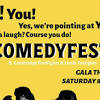TikTok Covens and QAnon Shamans: A Reading List on Neo ...

Become a Supporting Member
For 15 years, Longreads has published and curated the best longform writing on the web—and we wouldn’t exist without dedicated readers like you. Give today and ensure that quality journalism continues to flourish.
From the Rights of Nature movement to technological work advancing interspecies communication, I’m fascinated by new animist reimaginings of old beliefs in the agency and intelligence of nature. But this is just one thread of a bigger story: Ancient pagan ideas are now helping people navigate contemporary neoliberal crises. It’s a story that features modern characters, from internet witches to the shamanic avatar of the US Capitol riot—but one that began long ago.
In 380 AD, the Edict of Thessalonica made Christianity the official religion of the Roman Empire. From this moment, the Latin word paganus—meaning rural person—became a pejorative for anybody practicing a non-Christian religion.
More specifically, religious scholar Michael York argues that while paganism is highly polymorphous, the term unites geographically and culturally diverse spiritual traditions that share definitive features: animism, or the conviction that nature contains spirits and the divine; polytheism, or the worship of many gods, including female gods; and a belief in magic, or the supernatural.
This reading list focuses on a subset of pagan traditions often labeled neo-pagan: the array of contemporary religious and spiritual practices that recreate, reimagine, or explicitly draw upon the pre-Christian-Rome pagan religions of ancient Europe. This includes witchcraft, Wicca (a syncretic religion invented in the 20th century), Celtic Druidry, Germanic Heathenry, Greek Hellenism, Norse Odinism, and more.
Christianity is in rapid decline in the West (including in the US and UK). But neo-paganism is growing. US pagans are expected to triple to around three million by 2050, and 74,000 people identified as pagan in the 2021 UK census (up 30 percent since 2011). Moreover, paganism authority Ronald Hutton thinks official figures are likely under-estimates, given the private nature of much neo-pagan practice.
What explains this increase? The pieces below identify numerous drivers. Nature-connected spirituality holds obvious appeal in an age of environmental crisis. More generally, the failure of Western institutions (notably neoliberal governments, capitalist organizations, and Christian churches) to meaningfully address economic stagnation, climate change, and social inequality has fostered disillusionment and openness to political and spiritual alternatives. From the feminist self-expression of witchcraft to the conspirituality fuelling QAnon, neo-pagan-inflected thinking seemingly offers agency and insight into what social theorist Theodor Adorno called any “consciousness famished for truth.”
The significance of this pagan palimpsest revealing itself depends on who you back on the spiritual battleground. Some proponents see in neo-pagan animism the possibility of an ecological re-enchantment in the face of environmental disaster or even the seeds of an ecological utopia. Others fear the potential for new forms of dogmatism and subjugation. Indeed, some do wield neo-paganism in favor of such subjugation, arguing for fascistic futures rooted in mythic pagan pasts. These competing visions are integral to the spiritual realignments underway in the West, and how these changes are being leveraged for political ends.
Children of the Wicker Man (Edward Millar and John Semley, The Baffler, July 2019)
This Edward Millar and John Semley essay neatly frames the tension between utopian and dystopian neo-pagan possibilities by discussing the classic 1973 folk-horror film The Wicker Man (spoilers ahead). Using the film as a microcosm, Millar and Semley make a nuanced and important case for the power of ambivalence—in neo-pagan folk horror and in life. They convincingly show how horror and allure can coexist, shapeshift with social context, and germinate not on neatly opposing sides of a debate, but in the gaps and relationships between those sides.
When conservative Christian policeman Neil Howie arrives on the Scottish island of Summerisle to investigate a missing girl, he discovers a neo-Celtic community under the charismatic sway of Lord Summerisle. The locals thwart Howie’s investigation as the film darkens, building to an incendiary climax in which Howie is burned alive as a human sacrifice in a giant wicker man.
Millar and Semley note that The Wicker Man’s neo-pagan “ideas and imagery” have refracted through contemporary horror, “tapping into fears about manipulation, xenophobia, urban-rural divides, crowds gone mad, post-truth epistemology, and a lurking sense that personal agency is illusory.” But Summerisle’s pagans—reveling, celebrating, pranking—are not straightforwardly cautionary. “In the best films of folk horror’s original cycle,” they write, “the alternative belief system is equally horrific and alluring—stirring in the viewer a productive, and unsettling, sense of ambivalence.”
Crucially, Millar and Semley also explore how the ambivalence The Wicker Man evokes has shifted with social change. They situate the film in a folk-horror cycle beginning in 1968: a year marking the start of the end of the widespread faith in collectivist ’60s counterculture. Over the intervening decades of destructive individualism, has the cautionary note since shifted in the neo-pagans’ favor? Millar and Semley suspect so. Howie’s traditional, increasingly desperate appeals certainly seem to ring hollower given today’s discourse-chamber acoustics.
But ambiguity remains. “Unlike most horror,” Millar and Semley write, “in which an interloping monster is either destroyed (in order to purge a threat to an established order) or otherwise incorporated into that order, folk horror operates by implicating the viewer in the dissolution and destruction of that order.” Herein lies the horrific possibility that neo-paganism might metabolize useful scapegoats like Howie into new forms of subjugation:
The horror latent in folk horror, then as now, is not an abject fear of pagans or free-loving hippies or straight-up Satanists. It’s the unsettling knowledge that the people are often all too willing to trade one form of power and subjugation for an aesthetically different manifestation of those same conditions, if only to restore faith in power itself.
Witchcraft is perhaps the most prominent neo-pagan practice today (though not all witches identify as neo-pagan). Social media abounds with ritual and spellcasting, with #WitchTok videos having amassed some 65 billion views. Celebrity witches like Kate Tomas have further elevated witchcraft’s pop-culture pedigree. There is even a 4,900-member #BindTrump Facebook group aiming to thwart Trump with spellcraft. Bosker explains:
Over the past few years, witchcraft, long viewed with suspicion and even hostility, has transmuted into a mainstream phenomenon. The coven is the new squad: there are sea witches, city witches, cottage witches, kitchen witches, and influencer witches, who share recipes for moon water or dreamy photos of altars bathed in candlelight.
Bosker puts this revival in historical context: “In the US, mainstream interest in witches has occasionally waned but mostly waxed, usually in tandem with the rise of feminism and the plummeting of trust in establishment ideas,” she writes. But while not unprecedented, each revival holds a mirror to society. Bosker’s piece takes a curious, empathetic, and discerning look at the latest reflection, in which waning trust serves as the backdrop and Juliet Diaz as the subject.
One profile can’t definitively capture modern witchcraft’s diversity—also a feature of Wicca and other neo-pagan traditions—but Bosker skillfully traces its salient possibilities and problems. It is this diversity that offers many witches an inclusive, self-expressive, reclamatory freedom, often in contrast to the prescriptions of patriarchal, monotheistic religions. Bosker writes:
The latest witch renaissance coincides with a growing fascination with astrology, crystals, and tarot, which, like magic, practitioners consider ways to tap into unseen, unconventional sources of power—and which can be especially appealing for people who feel disenfranchised or who have grown weary of trying to enact change by working within the system.
Witchfrom BBC Four is a 13-part podcast that offers a fascinating, joyous exploration of contemporary witchcraft, rooted in a dark and often misunderstood history. Through compelling conversations with modern witches and experts, it asks why so many are drawn to witchcraft—and, ultimately, what it means to be a witch.
Bosker doesn’t shy away from the resulting tension between authenticity and appropriation, in Diaz or witchcraft generally. Witchcraft’s healing and expressive nature is all too appealing to the appetites of liberal capitalism. Diaz, as Bosker notes, “sells anointing oils and ‘intention infused’ body products in her online store, instructs more than 8,900 witches enrolled in her online school, and leads witchy workshops.” Such skepticism is always warranted within our economic system. Bosker’s achievement here is balancing that with an open-minded approach to the possibilities of what we call magic and the power of women reclaiming the practice of witchcraft.
“The Anthropocene is the cataclysmic result of civilization’s continuing depaganization,” Simon asserts in this paean to the radical possibilities of neo-paganism. His essay is a call back to pagan polytheism, animism, and enchantment with nature. Beyond these specific proposals, it’s also a heartfelt attempt—the kind we need more of—to address Western culture’s crisis of purpose (dare I say spirituality).
Whereas Christianity is complicit in fostering ecological collapse (God grants humans “dominion over the fish of the sea, and over the fowl of the air, and over every living thing that moveth upon the earth” in Genesis 1:28), Simon argues that “radical paganism can answer with the unity of all people and their sacred obligations to each other and the planet.” He continues:
Today, where a crisis of faith manifests in those cursed siblings of meaningless nihilism and fervent fundamentalism, and humanity’s relationship to nature is so inequitable that our economy, technology and industry threatens ecological apocalypse, how useful would it be to have a pagan theology, a new expression of divinity and the sacred commensurate with our current ruptures and crises?
Simon muses on what a neo-pagan canon might look like. Leavening pagan philosophy with thinkers ranging from Baruch Spinoza to Walt Whitman, his thought-provoking suggestions help show that neo-paganism need not represent either a regression to a mythic past or a form of naive romanticism:
What it seeks to do isn’t to pretend that the only authentic existence is living in a stone cottage among the bucolic groves but rather to elevate all matter, wherever it is found. Central Park is as worthy a place for an altar as Delphi. God is not just in the woods and seas, but in concrete and glass as well.
“I consider myself a connoisseur of brilliant lunatics,” Graeme Wood writes early in this profile of one such lunatic: Costin Alamariu, best known as the online persona Bronze Age Pervert (BAP). BAP advocates an aggressively elitist, bigoted form of neo-pagan politics drawing on muscular ancient Greek militarism. Wood relays some of BAP’s floridly offensive preachings to help illustrate his views on, for example, the modern liberal state:
Any person of talent or intelligence is ground down by this system, by life under the thumb of the empowered old matriarchs and the conceptual dildoes they use to clobber the heads of young men.
Phil Jones’ blog post “Acid Fascism: Past and present ties between occultism and the far right” (Verso, June 2021) sketches a longer history of the relationship between neo-pagan and far-right ideas as a corrective to what Jones sees as misplaced media surprise at its modern manifestation (exemplified in the response to Jacob Chansley, the so-called “QAnon Shaman,” raiding the Capitol in neo-pagan regalia). It describes how early 20th-century occultism served as a “crucible of Aryan and Volkisch ideology,” foreshadowing the “sleights of hand” through which social-media wellness advice can today slip easily into fascistic discourse.
Wood’s personal relationship with pre-BAP Alamariu enlivens his portrait, refusing the reader permission to compartmentalize BAP merely as an abstracted avatar. He also uses emotional juxtaposition—humor and horror, here—to disarming and disquieting effect. His profile mutates from absurd to terrifying, especially in the wake of Donald Trump’s reelection, as it unearths BAPism’s dormant popularity. BAP’s 2018 book Bronze Age Mindset was at one point among the most popular 150 books on all of Amazon. And Wood interviews not just experts testifying to the currency of BAPist ideas, but proud BAPists walking Washington’s halls of power.
Ultimately, Wood leaves us with an alarming case study of how neo-pagan imagery and ideas are being used to buttress a virulent far-right ideology presenting a new threat to complacent liberal democracy:
‘There is a level of self-loathing, chronic-masturbating anger out there among adolescent and early-20s fucked-up males,’ one Republican operative told me. To them the world is dry, purposeless, and designed for the flourishing of anyone but them. Conservatism in the old way—not Bronze Age old, but Reagan old—does not satisfy them.
This piece is a transcription of (most of) a conversation also recorded in a video. It feels fitting to feature an impassioned oral reading on this list as a nod to the original modality of pagan communication. While paganism isn’t once mentioned, the piece is a wonderful example of how we might rekindle the cultural animality and animism that underpins neo-pagan thinking. It presents important challenges to dominant cultural assumptions about religion, weirdness, and progress.
The conversation is also an excellent introduction to two thinkers—and the motley movement they represent—at the heart of work to build a slower, more reciprocal, more entangled society that takes neo-pagan practice seriously. David Abram is a philosopher whose work centers around the question: “Can we find ways of speaking that call us back into rapport and reciprocity with the other beings, the other shapes and forms of this world?” Dougald Hine is the co-founder of the Dark Mountain Project: a gathering place for people looking, in the face of climate disaster, for a place of deeper hope that only exists on the far side of what the two call a “gate of grief.” Hine says:
One of the phrases from the manifesto which I’ve held onto most is when we say, ‘The end of the world as we know it is not the end of the world, full stop.’ And I’d add to that, that the end of the world as we know it is also the end of a way of knowing the world. Whatever happens, to the extent that we are still going to be here, we’re going to live through the end of a lot of the certainties that characterized the ways of knowing the world that have served us for the past few lifetimes. And that’s not a utopian goal, that’s something that is going to happen whether or not we manage to do anything about climate change.
The conversation is a stirring call for reanimated senses, a re-enchanted relationship with nature, and an openness to non-human organisms as “ambiguous biosphere of overlapping agencies, not quantifiable objects.” Abram and Hine don’t see these neo-pagan-inflected qualities as a panacea but as necessary ingredients in any antidote to the overconfident abstractions of Enlightenment scientism. As Abram puts it: “Those animals, plants, and landforms are our real neighbours, the folks with whom we need to be practicing real community, if we want to be living well in any place.”
Sam Firman is a freelance writer and editor based in the UK. He writes a newsletter about how we relate to our environments, and how this might help build better systems.
Editor: Carolyn WellsCopyeditor: Krista Stevens


 United Kingdom
United Kingdom Argentina
Argentina  Australia
Australia  Austria
Austria  Brazil
Brazil  Canada
Canada  Chile
Chile  Czechia
Czechia  France
France  Germany
Germany  Greece
Greece  Italy
Italy  Mexico
Mexico  New Zealand
New Zealand  Nigeria
Nigeria  Norway
Norway  Poland
Poland  Portugal
Portugal  Sweden
Sweden  Switzerland
Switzerland  United States
United States 
























